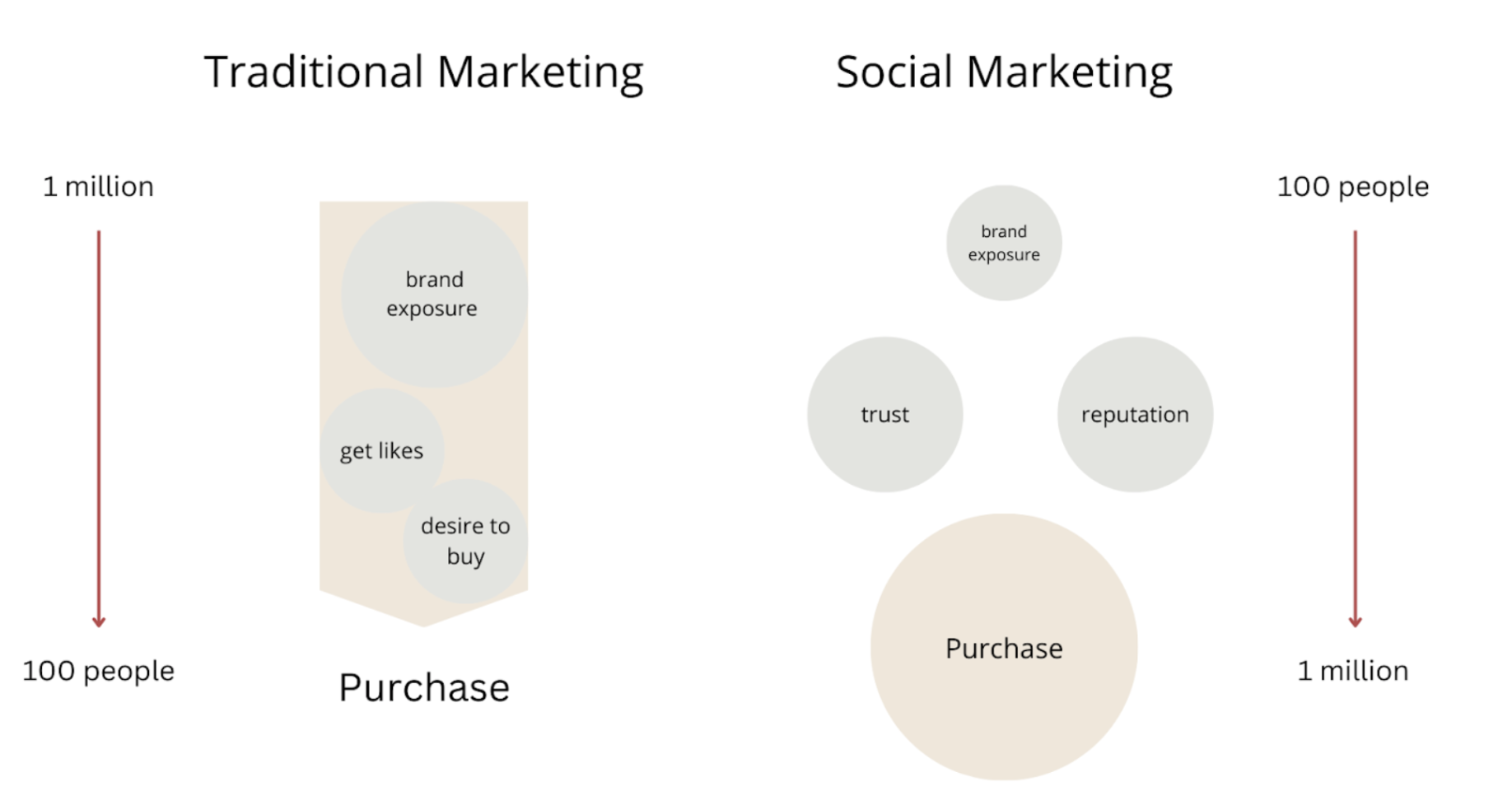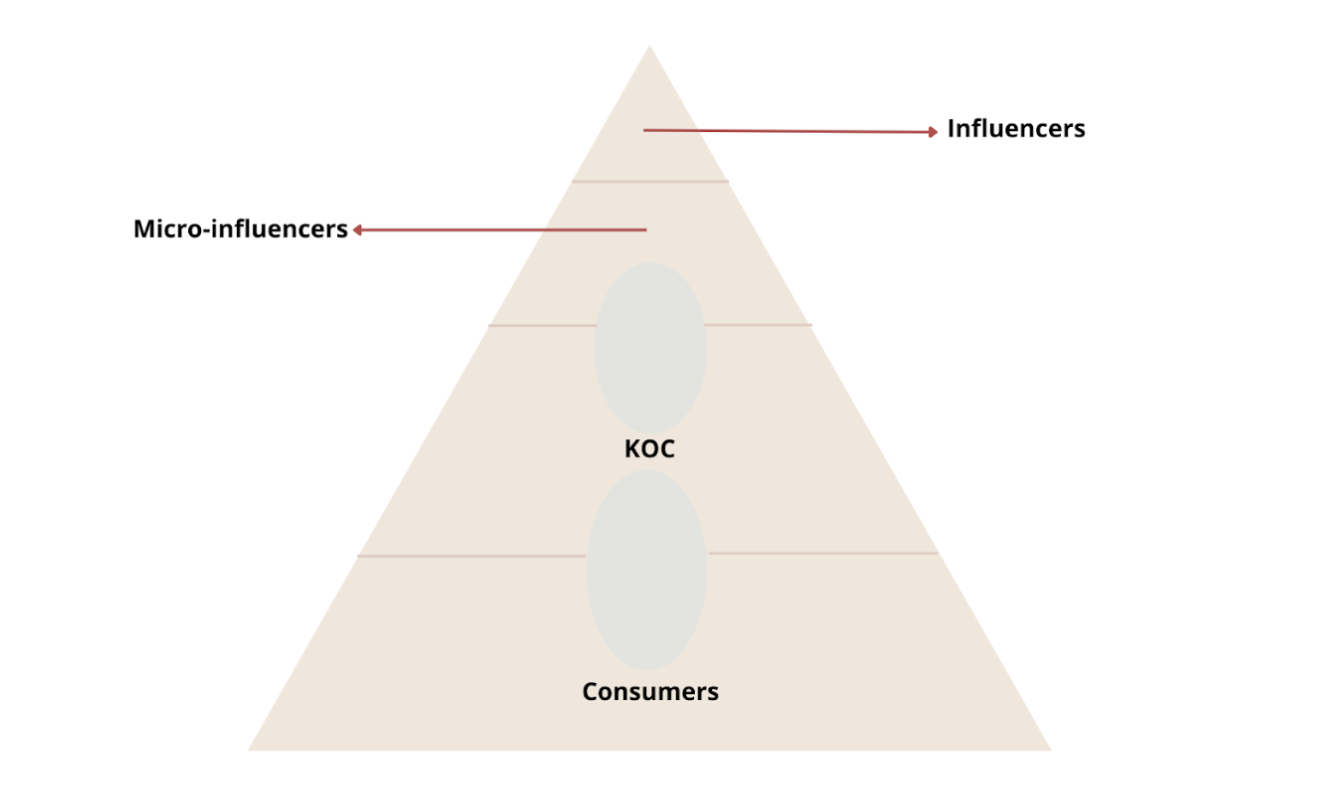From Influencer Marketing to KOC marketing - How Do You Increase Sales by Creating Private Traffic?
What is a KOC?
Advertising has permeated every aspect of our lives in the digital age, from the products we buy to the shows we watch. With the rise of social media, the marketing industry has shifted from traditional mass media marketing to social marketing. However, with a constant stream of information at our fingertips, it can be challenging to determine which products and services are worth our time and money. That's where the so-called ‘trust economy’ becomes increasingly crucial in social marketing.
The trust economy is about creating connections and building relationships based on trust, and influencer marketing is produced under the trust economy and social marketing. However, as influencer marketing has become more prevalent, the market has become saturated, making it harder for brands to stand out, or cut down the cost and make an impact. This is where a new concept, KOC (Key Opinion Consumer) comes in.
KOC focuses on identifying and targeting the individuals who have a significant impact on consumer behaviour and opinion. According to McKinsey’s research, 66% of marketing messages are not generated directly from the company, 19% of purchasing decisions are influenced by word-of-mouth and the experience of similar individuals has the most impact on driving purchasing behaviour. Those individuals are KOCs in their areas. The concept of KOC has been increasingly applied into marketing campaigns on Chinese social marketing, but it can easily be used on other countries' digital marketing campaigns as well.
Why consider KOCs in your marketing campaign?
The distinction between influencer and KOC is not always clear. If we roughly divide the entire brand marketing chain into three parts - top, middle, and bottom - influencer marketing represents the top with high transmission power to quickly build brand awareness. KOC represents the middle power, which may not have as much exposure, but can achieve better connection to the consumer with high-quality content and has a chance for low-cost transmission outbreaks. The bottom of the chain represents consumers, who are typically passive recipients of marketing information.
The KOC is closer to the customer and has a stronger link to them, making them easier to be trusted. The KOC is different from the influencer who gain marketing power from long-term content creation, but has greater decision-making influence over a specific group of consumers, and is able to drive purchase behaviour of the potential consumers.
In terms of content, a KOC usually shares content as a regular user to endorse a band, online or offline with friends and family, rather than as an expert to promote products. This gives the KOC more credibility and a greater ability to influence other users’ decisions. In terms of user relationships, KOC has a closer relationship with consumers, and they may even be regular consumers themselves, so they are able to influence other consumers through empathy when sharing content. Influencers, on the contrary, may not be as trusted as a KOC because everyone knows they get paid by posting commercial content. And in terms of cost, KOC has a lower cost of cooperation and a relatively higher ROI compared to influencers, which is also a good marketing method for small startups to start getting into the market and building reputation.
However, it is important to note that the KOC and the influencers shouldn’t be viewed as mutually exclusive. Both KOC and influencers have their own strengths and weaknesses. A KOC can provide a more personal and credible endorsement, while an influencer may have a larger reach and better for building more brand awareness. By working together, brands can effectively reach different segments of their target audience and achieve a better return on investment.
Why has KOC marketing become more and more popular in China?
Currently, the internet penetration rate in China is 74.4%, which indicates that a large number of untapped potential customers are already ready for the arrival of e-commerce. The Chinese e-commerce market is already booming. In 2022, the sales of e-commerce in China reached 1.379 trillion Yuan, around 18 billion Euros, and its massive consumer market also shows the endless potential of e-commerce in China. Unlike e-commerce in other countries, Chinese e-commerce is more focused on social commerce.
From a historical and social perspective, China has been an acquaintance society for a long time, and people naturally trust relatives, friends, and even neighbours. Before the internet, many people would ask for opinions from others, from skincare products to property, before making a purchase. So when social media rapidly developed, e-commerce gradually merged with social media, evolving into the current commerce community - the entire shopping experience, from discovering products to researching products and then to the checkout process, all took place on social media.
KOCs have also gradually developed in this situation where the integration of e-commerce and social media has resulted in the growth of community commerce. With the widespread use of social media in China, KOC has become an important part of the marketing mix for many businesses. KOCs use their personal networks to endorse products and services, leveraging the trust that they have built with their followers. This provides a unique advantage over traditional influencers as KOCs are seen as regular consumers who are able to influence others through their experiences and recommendations. In this way, they have become a vital player in the rapidly growing Chinese e-commerce market.
How can you find your KOC?
KOCs lack the systematic content creation ability compared to influencers, but they are usually willing to share their opinions on various social platforms, and are often keen users who have a certain degree of loyalty to the brand. If the brand has its own group or community, a KOC is often an active member in the community.
Once a brand recognizes a KOC among its users, it can try to bind its brand value with the KOC, but it will be a more of a light cooperative relationship rather than directly advertising like influencers.
In addition to recognizing KOCs among consumers, the brand can also try to create its own KOC. In today's market where the concept of "private traffic" becomes more and more popular, many brands are trying to manage consumer's personal social accounts as an unofficial brand account, which can be seen as creating KOCs.
The implementation of a KOC-based approach mainly focuses on building and enriching the personal image, such as the posts of the KOC cannot just be sharing hard-selling information related to the brand, otherwise it is easy to get blocked.
As mentioned earlier, the most important thing about the KOC is the sense of trust. A KOC needs to share a large amount of topics unrelated to the brand to enrich the personal image, such as some jokes, self-portraits, fun things, interests, etc., depending on the individual image.
For the brand, growing a KOC is more like a cultivation game, as the KOC generally does not have too many commercial attributes, it takes a long time to accumulate trust, otherwise it is difficult to truly convince KOCs and potential users to cooperate.
Photo: Frida Waywell
Thank you for reading my article! I would love to hear from you if you have any thoughts within this
Ying Shi
Culture lover and inward explorer
Growth marketer and Chinese E-commerce specialist




